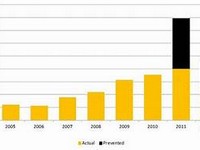Lamotrigine

Lamotrigine
CLINICAL USE
Monotherapy and adjunctive treatment of partial seizures, and primary and secondary generalised tonic-clonic seizuresTrigeminal neuralgia (unlicensed)DOSE IN NORMAL RENAL FUNCTION
25–200 mg daily in 1–2 divided doses, according to clinical indication. Maximum 500 mg daily; 700 mg with enzyme-inducing drugsPHARMACOKINETICS
DOSE IN RENAL IMPAIRMENT
GFR (mL/MIN)
DOSE IN PATIENTS UNDERGOING RENAL REPLACEMENT THERAPIES
IMPORTANT DRUG INTERACTIONS
Potentially hazardous interactions with other drugsADMINISTRATION
Reconstition
–Route
OralRate of Administration
–Comments
–OTHER INFORMATION
There is no experience of treatment with lamotrigine in patients with renal failure. Pharmacokinetic studies using single doses in subjects with renal failure indicate that lamotrigine pharmacokinetics are little affected, but plasma concentrations of the major glucuronide metabolite increase almost 8-fold due to reduced renal clearanceThe 2-N-glucuronide is inactive and accounts for 75–90% of the metabolised drug present in the urine. Although the metabolite is inactive the consequences of accumulation are unknown; hence the company advise caution with the use of lamotrigine in renal impairmentThe half-life of lamotrigine is affected by other drugs; reduced to 14 hours when given with enzyme-inducing drugs, e.g. carbamazepine and phenytoin, and is increased to approximately 70 hours when co-administered with sodium valproate alone.
See how to identify renal failure stages according to GFR calculation
See how to diagnose irreversible renal disease
Home








